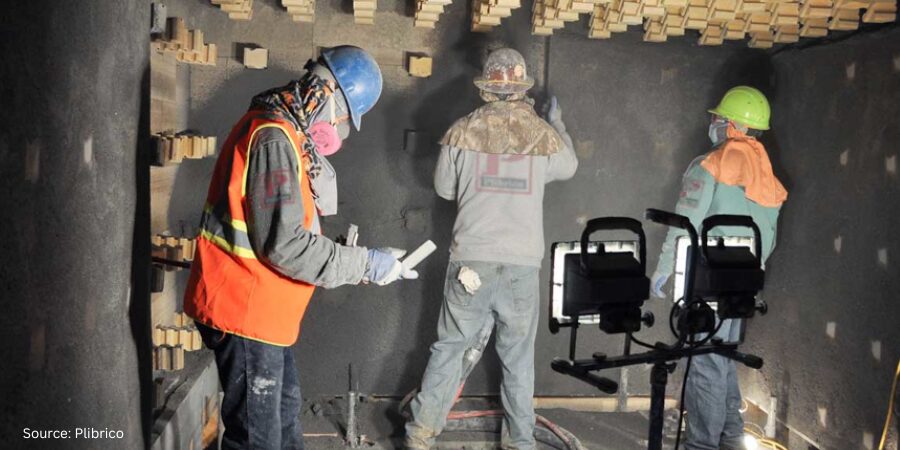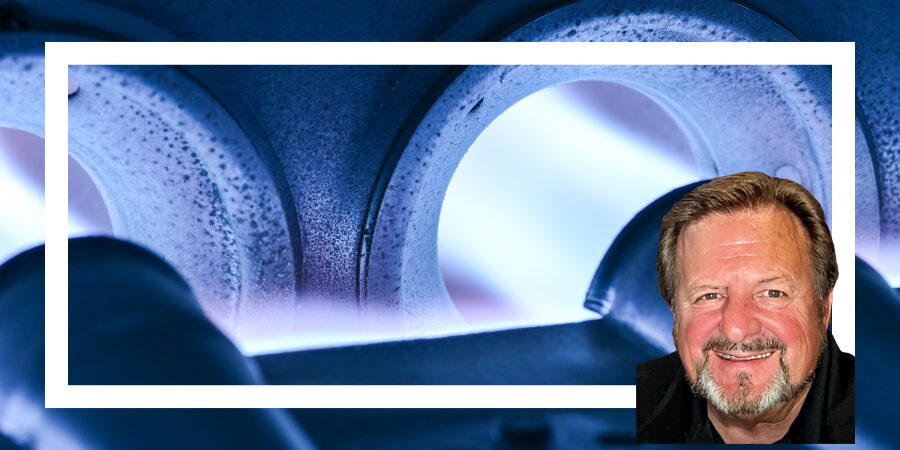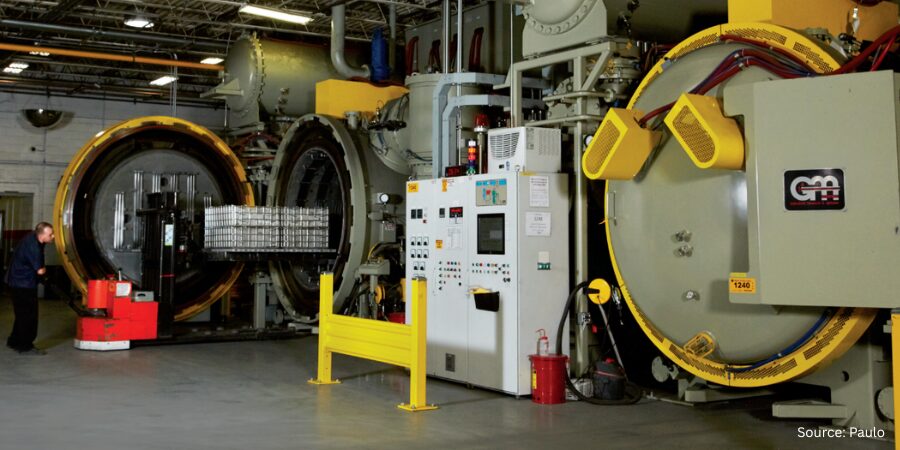For heat treaters, choosing the right refractory lining is critical to keeping furnaces running safely and efficiently. Linings must endure extreme heat, stress, and chemical attack while balancing downtime, longevity, and cost. In this article, Plibrico Company Technical Services Group explains how refractory engineers carefully balance five critical factors to deliver solutions that meet today’s demanding production needs.
In refractory lining maintenance, recommendations for repairs and relines often consist of selecting a similar or equivalent material to replace the original. Sometimes that’s sufficient. Many refractory contractors and maintenance teams strive to use best practices by purchasing the same refractories that have worked on similar equipment in the past, but this carries the risk of assuming that nothing has changed in the process, production, or maintenance of the equipment over time. This assumption can be a dangerous bet because furnace equipment is made to meet the immediate demands of each thermal processor, and these demands often change depending on factors like production orders and maintenance capacities.
Choosing an appropriate refractory lining for an application isn’t always a straightforward decision. Many times, it is part science and part art. Making an effective choice requires knowledge of the industrial application process, refractory performance expectations, and potential refractory service failures. These factors must then be weighed against each other to find the right balance and best solution.
While there are a number of important criteria to consider, refractory engineers focus on five aspects to evaluate and choose a refractory material for each specific application: thermal, mechanical, chemical, logistics, and value — as well as connections among these aspects.
What is the best refractory material choice? To answer this question, each individual application requires an overall evaluation of the thermal processing furnace in relation to each of the five factors, and then a careful balance of each of these in finding the best solution that meets both the immediate and long-term needs of the thermal process.
Thermal Requirements: Temperature
For any high-temperature industrial process, the primary piece of information is the operating and maximum temperatures. The refractory lining chosen must meet the operating temperature requirements.
Refractory linings are designed to maintain physical properties at very high temperatures — 932°F and above. Refractories used to line thermal equipment must have proper insulating properties to reduce the steel skin temperatures to acceptable levels, usually well below 300°F. Multi-component linings employ a dense refractory material at the hot face with an insulating refractory or ceramic-fiber board or blanket behind it, well-known for achieving adequate cold-face temperatures with structural integrity for long thermal life.
Spalling and thermal shock are the most common thermal failure mechanisms in a refractory lining. These are due to crack formations caused by temperature cycling and high thermal loads. There’s more to learn about fracture mechanics thanks to expert research, but knowing the importance of this phenomenon is enough for the application specialist.
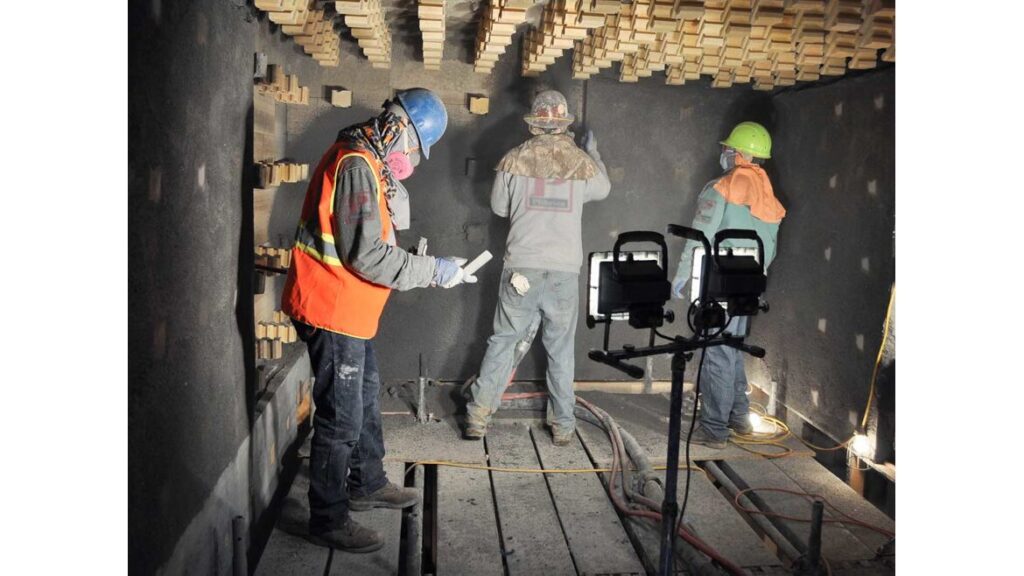
Source: Plibrico
In recent years, many thermal processors have experienced increased production demands. Meeting that need means that their furnaces are operating at higher temperatures for increased output. Running furnaces harder and faster often has the unintended consequence of overheating the refractory to the point that phase changes in the refractory matrix start to occur, causing lower-temperature glassy phases to form, softening the refractory, and shortening life. Due to this, the refractory engineer often needs to consider a material with higher refractoriness to meet the performance needs of shock resistance and high thermal loading. This usually means a higher-alumina material.
Physical Properties: Mechanical
The vast majority of higher-performing refractories in service today have been developed to maximize a material’s physical properties to improve lining lifespan and keep furnaces running at their best performance. Much of the information on a product Technical Data Sheet is devoted to the physical properties of the material, such as cold crushing strength, hot/cold MOR, and abrasion resistance. All of these are based on well-defined ASTM standards to make valid comparisons among available choices.
Refractory linings experience all sorts of mechanical and thermal loads that lead to wear and eventual failure, requiring repair or replacement. Some of these include excessive expansion, thermal cycling fatigue, mechanical impact (dynamic loading), severe abrasion and erosion, pinch spalling, tensile loads, large hydraulic loads (such as in molten-metal containment furnaces), and creep (deformation at high temperatures over time). While a deeper discussion of each of these failure modes is beyond the scope of this article, knowing the type of potential refractory failures for each application becomes the solution in choosing the refractory to best address the failure mode present.
During a visual refractory inspection, the lining can often give clues about failures. Crack patterns, wall buckles, surface spalls, discolorations, and other visual differences occur in locations and manners that correspond with their failure type. Mechanical and thermal forces will find weak points and initiate cracking. Many times, these occur in typical geometric locations and patterns, such as sharp inside corners, archways, midpoints of a lining, and in circular patterns, indicating a particular failure system. These will usually indicate shock and expansion due to high thermal loads, inadequate expansion allowance, deficient material properties for the application, and/or improper anchoring.
Corrosion: Chemical
Chemical attacks on the refractory matrix have been a fundamental concern of ceramics engineers since the beginning of refractory development. Chemical reactions between the vessel’s contents and the refractory at high temperatures can cause a change in the structure of the refractory matrix, which can have a detrimental effect on the performance and life of the lining. Chemical or mineralogical changes due to reactions occurring within the refractory lining can cause excessive volume change of the crystal structure or reduction of the oxides in the lining, leading to a breakdown of the ceramic bonds in the cement. The most common examples of these are:
- A reducing atmosphere of carbon monoxide reacting with the lining, such as in CO boilers
- An H2 reaction in the lining, which reduces silica in the refractory matrix at high temperatures
- Molten slags, such as in coal-fired boilers
- Alkali corrosion from ash in wood-burning furnace applications
- Corundum growth in aluminum furnaces, especially those with aggressive alloys containing MgO
Installation: Logistics
In addition to the aforementioned elements, refractory construction contractors are faced with multiple logistical pressures to get their clients’ thermal processing equipment back on-line. This means that the choice of anchoring systems, installation methods, and bake-out becomes an important consideration.
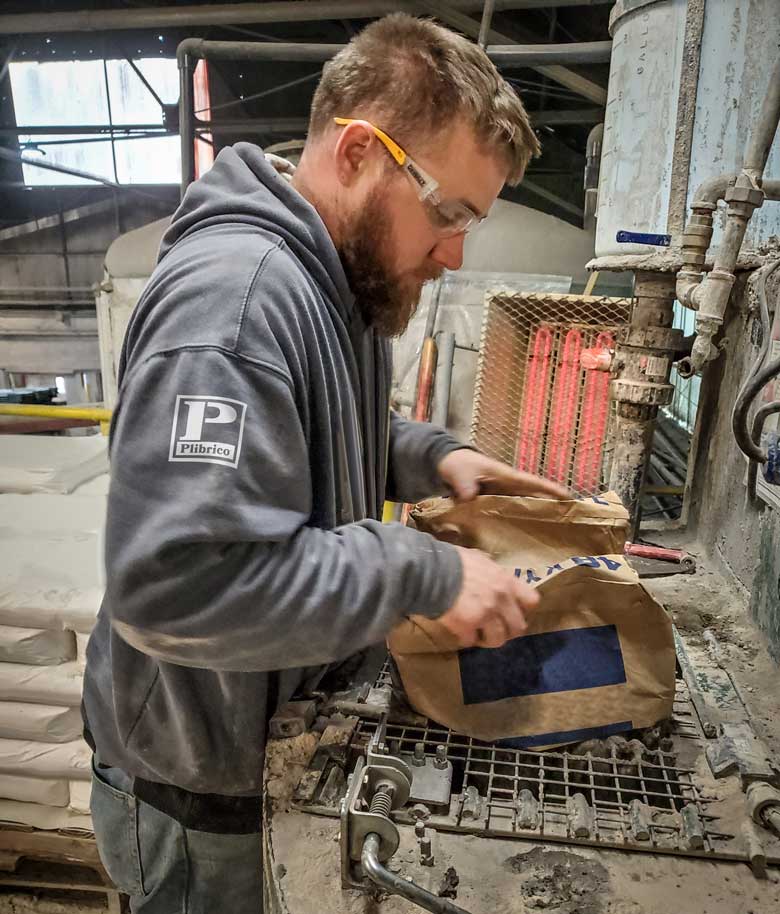
Source: Plibrico
The adage “time is money” is often a deciding influence when crafting a refractory solution. “Get it back up and running ASAP” is often the most pressing need communicated by the thermal processor. For example, while a brick lining often gives clients a highly durable option, bricking a job is very labor-intensive, requires high levels of experience, and usually takes a long time to complete. A cast-in-place lining may yield the best physical properties in service, but the time also needed for forming (or multiple formings), casting/pumping, then stripping may not be desirable. In other words, the required length of downtime may not justify these options.
Another example is the use of low-cement castables, which have superior properties. These have been around since the Plibrico Company first developed them, but they require more careful and longer bake-out. Gunning or shotcreting the lining could be a viable option if time or cost is a determining factor because forming is not required, and material can be placed at higher rates.
While a cast product theoretically produces the best physical properties in general, followed by shotcrete and gun mixes, time limits may require another method of installation. Other factors to consider may be to ram the lining using plastic, which requires no setting or moist cure requirements. With the advent of reduced bake-out refractories, such as Plibrico’s Fast Track castables and gun mixes, contractors can place material and fire several hours sooner. This saves time and money but often at a cost of reduced physical properties. Again, it is a balancing act.
Price: Value
Refractory linings are one of the most significant operational costs over the life of an industrial furnace. Therefore, when choosing a material for the application, price is always a very important factor. However, value is not only reducible to price; there is often more than one choice of materials to pick from.
The economics of each individual application can direct the engineer/specialist to recommend one solution over another. When we speak of price, the real driver is value. Everyone wants a refractory product installed that is good, fast, and inexpensive. However, it is often very difficult to achieve all three of these simultaneously. Value is the determination of the relative importance of each.
Conclusion
The question to be asked is this: What do refractory linings do? Their most basic function is to withstand very high temperatures; contain heat within a vessel; have adequate physical properties, such as strength; and resist chemical degradation or disintegration by aggressive atmospheres and corrosion by liquid slags and solids.
Choosing the right material solution for thermal processing applications requires balancing multiple aspects to determine a hierarchy of which aspect is most important. In many cases, there is no single answer to the problem. However, understanding the process, challenges, history, and root causes of refractory failures becomes the key to making the best decision to solve the problem.
For more information: For more information about choosing the best refractory lining, contact Plibrico Company at contact@plibrico.com or 312-337-9000
This informative piece was initially published in Industrial Heating. All content here presented is original from the author.





